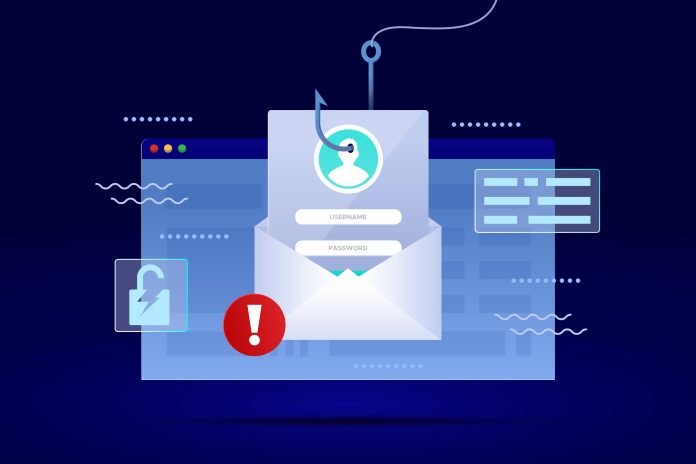Email security protocols like SPF, DKIM, and DMARC help verify email authenticity to thwart phishing and other cyber attacks. These solutions are essential to a hardened IT infrastructure and key to a comprehensive cybersecurity solution.
Authentication and encryption protect data in transit by preventing eavesdroppers from reading emails during transmission. This can prevent attackers from using sensitive information to commit phishing and ransomware attacks.
SSL/TLS
Phishing is one of the biggest challenges businesses face in protecting sensitive and confidential information. Hackers can use several means to extract this information, including social media platforms, email, or even phone calls. One of the best email security solutions to prevent phishing is ensuring that websites and systems have the latest SSL certificate and are properly configured to avoid it.
SSL (Secure Sockets Layer) is an encryption protocol that protects communications between a website and its visitors. It transforms readable data into an unintelligible form, ciphertext, that can only be recovered through an inverse process. It ensures that the intended recipient can only read the message and no other unauthorized parties can intercept it.
TLS (Transport Layer Security), the latest version of SSL, improves several security flaws found in its predecessor. It digitally signs and encrypts data to protect the connection between a website server and its users, such as emails, VoIP calls, and other applications.
Many websites now use SSL/TLS to keep user data private and secure. This is thanks to Google calling for HTTPS everywhere and rewarding sites with higher search engine rankings, Mozilla and other major developers pushing for stronger encryption, and free certificates like cPanel’s AutoSSL, making it easy for website owners to get them.
S/MIME
Email is critical for business; unfortunately, it is a common attack vector for phishing and malware attacks. Cybercriminals can intercept an email in transit or while it’s sitting on servers or clients, and they can use it to steal confidential information or redirect traffic to a fake website.
S/MIME uses a combination of digital signatures and encryption to help protect emails in these scenarios. Encryption converts the content of an email into a coded language that can only be deciphered by the intended recipient with their private decryption key. This helps prevent in-transit and at-rest data theft.
Digital signatures add another layer of security by verifying the authenticity of an email and its sender. If your email client confirms that a signature is intact, you know the message hasn’t been tampered with and that the information it contains hasn’t been changed in any way. This can prevent spear phishing, social engineering, and identity theft.
S/MIME is a secure email protocol requiring both the sender and receiver to have an S/MIME certificate. Emails are encrypted using the sender’s public key, which is publicly available, and decrypted by the recipient’s private key, known only to them. It’s a simple way to increase email security and reduce the risk of data theft. Especially for businesses that need to comply with regulations like HIPAA or GDPR, S/MIME is essential for protecting sensitive information.
DKIM
Email is the primary communication tool for most companies, and malicious actors exploit it to deliver phishing attacks that can compromise the integrity of email channels and lead to costly financial losses and damage to the company’s reputation. Implementing security protocols like SPF, DKIM, and DMARC helps reduce the threat of cyberattacks and improves email deliverability.
DKIM is an email authentication technique that allows recipients to verify that an outgoing message was sent and authorized by the domain owner. It does this by adding a digital signature to outgoing messages. The signature is cryptographic, and the receiver can validate it using a public key published in the domain’s DNS records.
Unlike SPF, DKIM authenticates email messages by signing selected parts of the header information. This ensures the message cannot be tampered with or forwarded to other parties between the sender’s and recipient’s systems. DKIM also works with SPF and DMARC to provide additional protections against email fraud.
All three email authentication techniques use DNS TXT records to store information about which servers are authoritative for a domain (SPF), how emails from those servers can be authenticated (DKIM), and what to do when an email does not show correctly (DMARC). Email providers and businesses must set up these records, test them, and monitor them to ensure they work properly.
DMARC
Domain-based Message Authentication Reporting and Conformance, or DMARC, is an email authentication protocol that allows domain owners to set policies to specify how receivers should respond to emails that fail to pass the authentication checks (report, quarantine, reject). The standard builds on the SPF and DKIM standards by requiring senders to identify authorized email domains.
DMARC is a powerful tool that helps combat the threat of phishing and other cyber attacks. However, it’s important to note that the technology doesn’t stop attackers from exploiting employees or customers through human error. Therefore, organizations must also teach their employees to develop a healthy dose of online skepticism and always look beyond the email’s surface to verify that it is from the source they think it is.
To take full advantage of DMARC, you’ll need to deploy it in your DNS and then monitor the results. This can be done easily by using Proofpoint’s DMARC monitoring service.
As with SPF and DKIM, DMARC requires that you first publish your DMARC record to ensure that your email recipients have it available. This will let them know that your organization uses email authentication and provide a way to tell you if they’re receiving illegitimate messages from your domains. Once you have a verified DMARC record, you can set a policy to determine what action should be taken on emails that don’t pass authentication tests.













